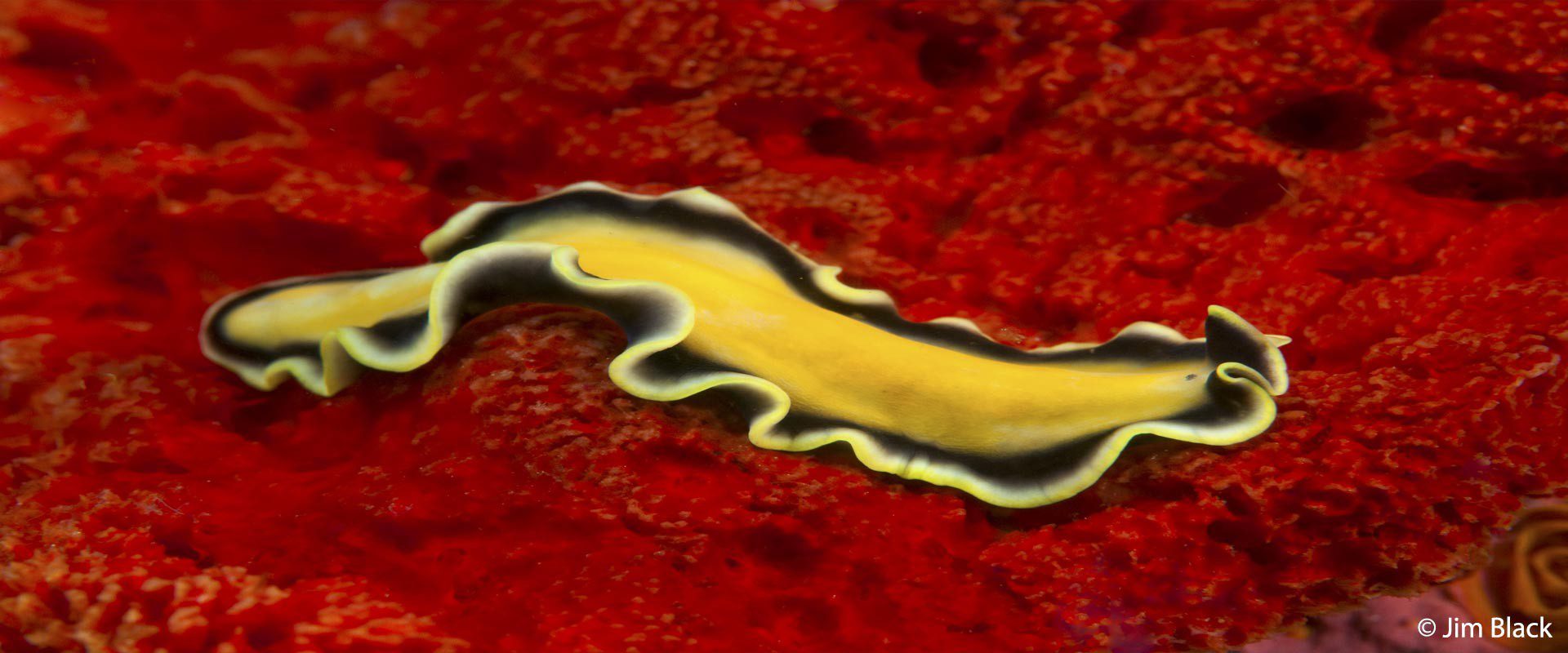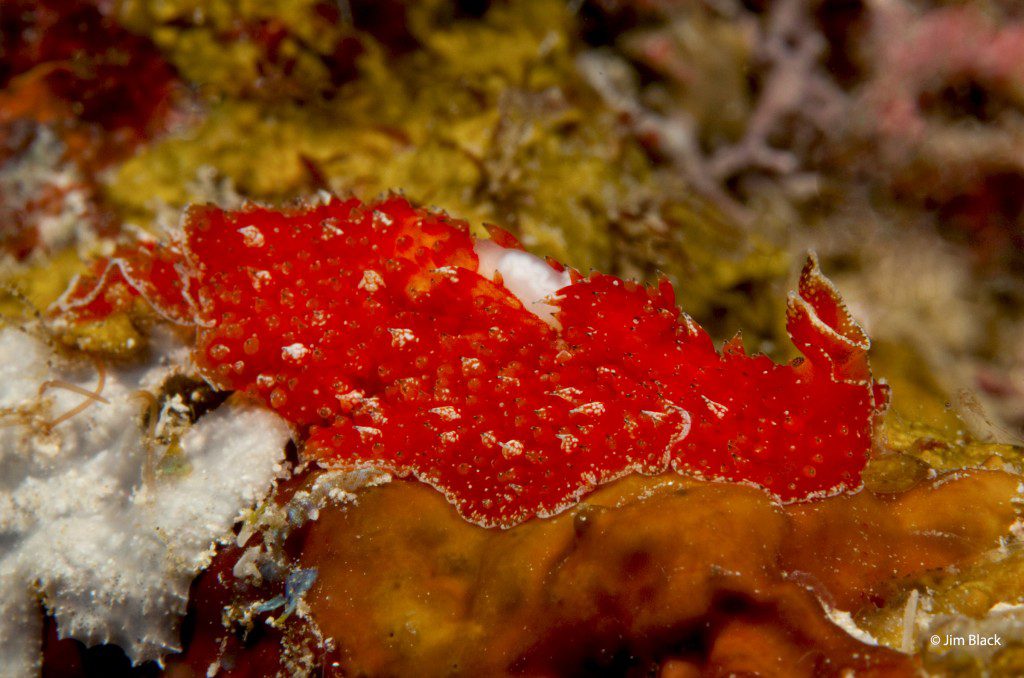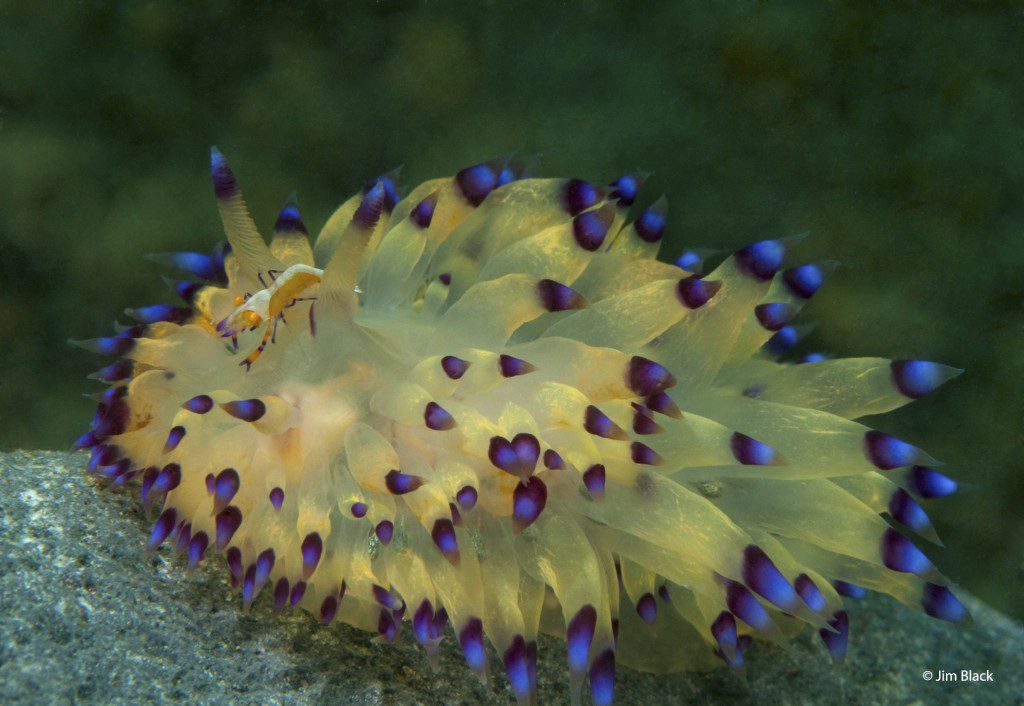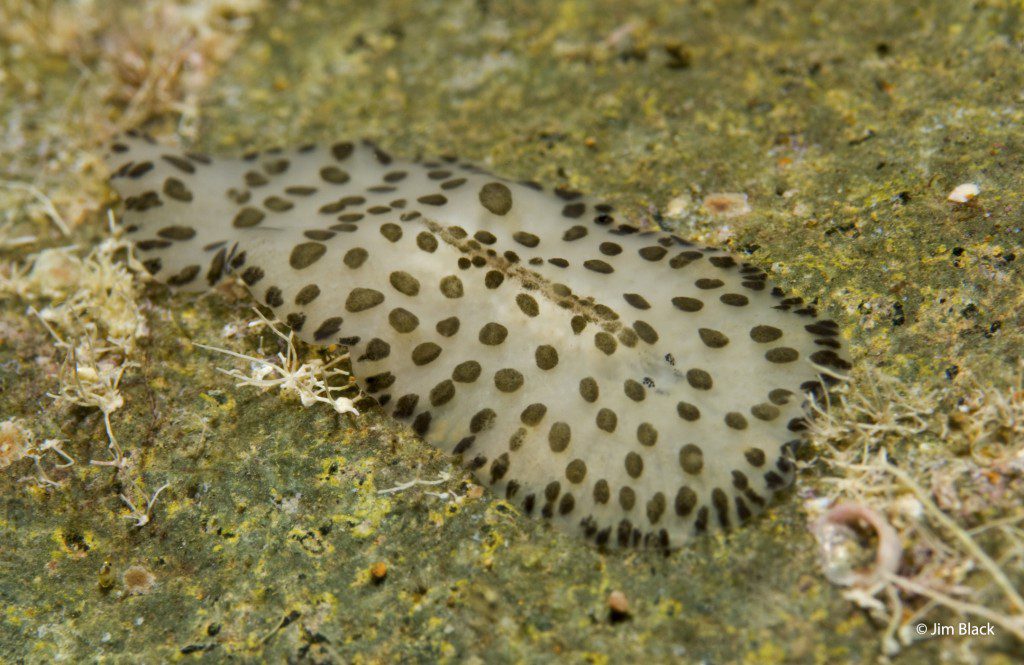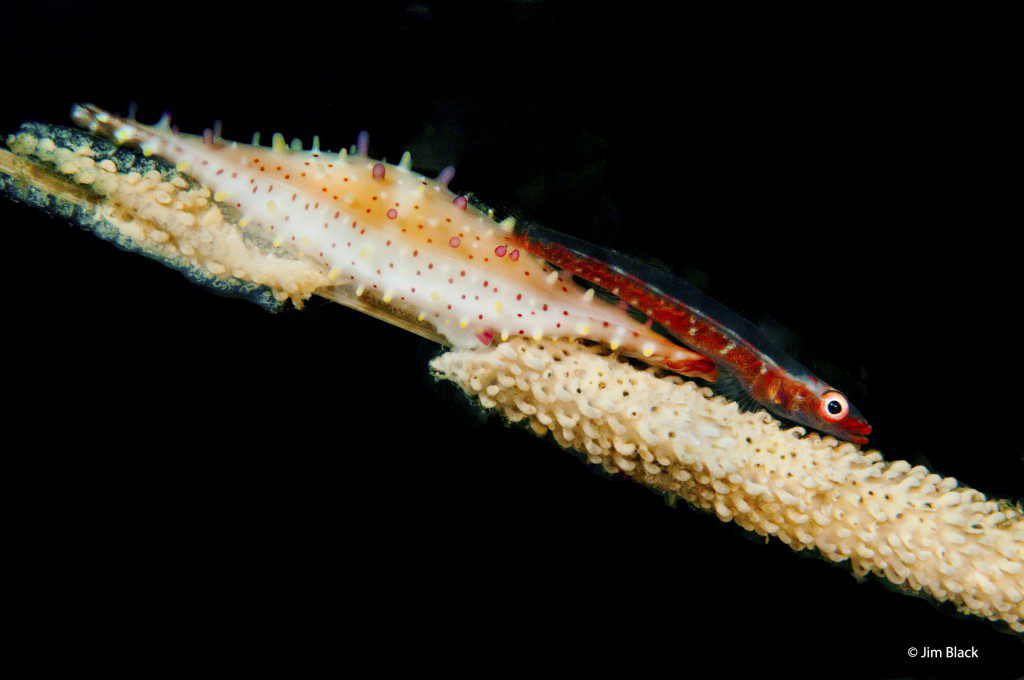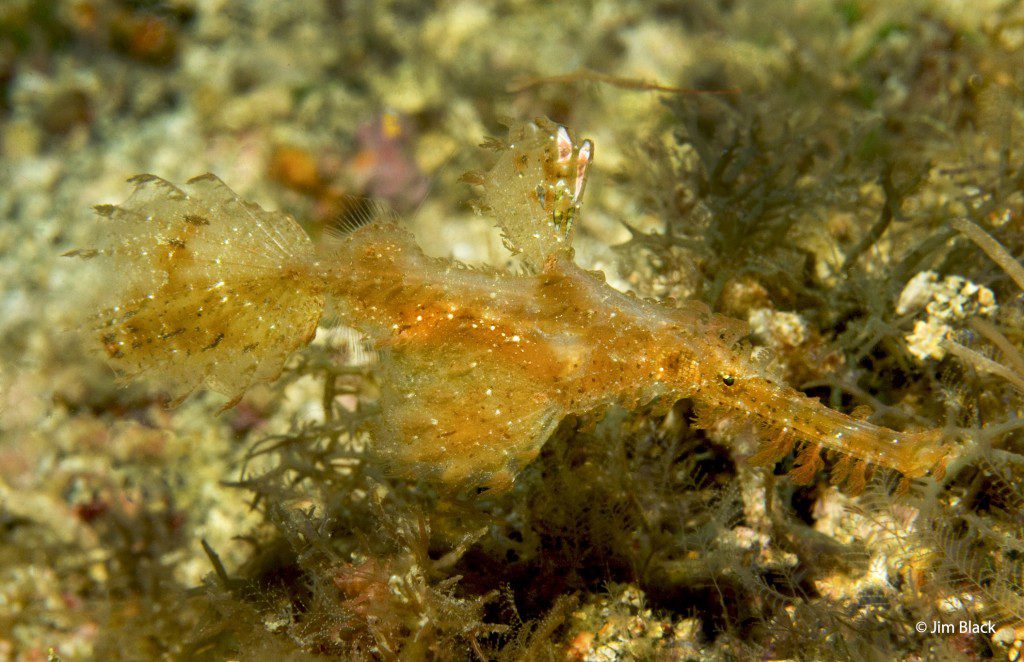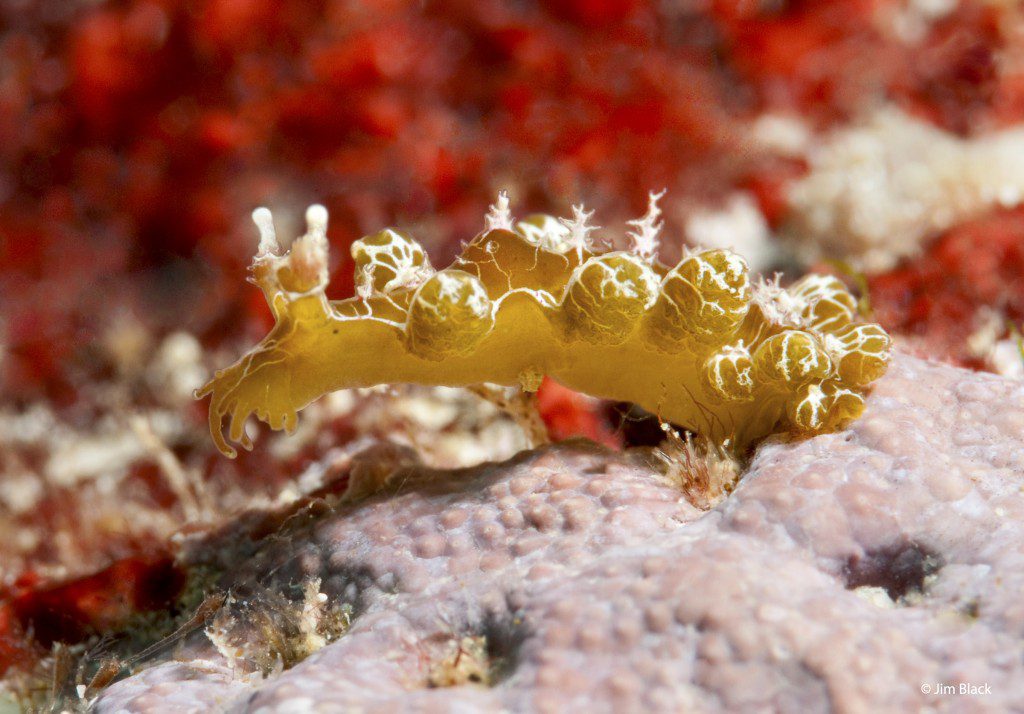THE PASSAGE: text and photography by Jim Black
THE PASSAGE
There is a narrow, meandering waterway that separates Waigeo and Gam islands in Raja Ampat. Divers call it “The Passage”. My first voyage up that channel with its jungle-shrouded karst walls produced a gut feeling that this place was truly alive. I have come to love The Passage because it is a special place that has never failed to exceed my diving dreams. “The Passage” calls the shots though; you dive where and when it permits. When the tides and currents are peak, you must stay out of the current and shelter in the small, still bays along the shore. Reminiscent of Lembeh Strait, these bays harbor incredible macro life and are shallow enough to allow maximum bottom time for prolonged critter hunts. The ocean pushes veligers (larval stages) and juveniles through The Passage’s narrow corridor, and they eventually eddy into these tiny coves.
One special photo subject of note here is the flatworms. They are plentiful, and several of the species I have photographed here are not found anywhere else that I have dived in the Indo-Pacific. To my knowledge, many are still undescribed.
You can move down current easily enough from bay to bay. Each one has a totally different feel, like moving from room to room in a museum. The next bay has large sea fans that reach within inches of the surface. Picture the wide angle shot…in 20 feet of water…lighting a red 10-foot-wide sea fan with your strobe and balancing the available light that streams down through the dense jungle above. Artful indeed! The next bay has cavern-like ledges that cut back underneath the karst above. The water here is usually extremely clear, highlighting the stunning view to the surface. Additionally there are a few coral heads covered in anemones and their resident anemonefish that reach near the surface. That scenario offers the perfect photo opportunity for some crafty over/under split images. For thrill seekers: pump up your BCD, jump into the raging current and enjoy a cinematic 30-minute thrill ride through the entire length of the waterway.
When the current slackens a bit, you can meander out into the middle of the channel. I treasure these small windows, when current is absent and our liveaboard’s dive times coincide. The substrate in the middle of The Passage is a current-swept conglomerate of rubble, small bommies and small soft corals. Without the tenacious current, divers can move easily among the plentiful photo subjects, from nudibranchs to flatworms to small gobies to lovely cowries in the soft corals. As fighter pilots say, this is a “target rich environment”!
While day dives at The Passage are superb, night dives kick it up a notch as the “night shift” comes out to forage. On one night dive, our divemaster suggested a place he had always wanted to try – a backwater cove near a shallow wall. As we rolled off the dinghy to the bottom at 10 meters, we found ourselves chest deep in a patch of finely decayed jungle leaf matter. Who knows how long it has been here? It was a bit disconcerting when the false bottom didn’t hold my weight, but we all eventually scrambled out of this silty putrescence. Of course, we had trashed the immediate visibility. A light current eventually swept the area clean, and we continued to dive along the wall and its rubbled bottom. The site was superb despite the inauspicious start. That night we found five nudibranchs new to me (three are undescribed), some lovely flatworms, a Tozeuma shrimp with eggs, a pair of tiger shrimp, a lovely flame scallop, a semi cooperative Saron shrimp, and a lifetime’s worth of laughs about our buoyancy skills.
I’ve dived all over the world, but I never tire of diving in “The Passage”. It remains near the top of my “Absolute Best” list.
Jim Black is a retired military and commercial pilot whose passion is underwater photography. Jim enjoys “the hunt” for marine critters, especially nudibranchs and flatworms. To see more of his images go to Maps>West Waigeo, then click on the map pin for THE PASSAGE and scroll the site’s image gallery. Jim is also a frequently contributor to Mike Miller’s (Slugsite)





































